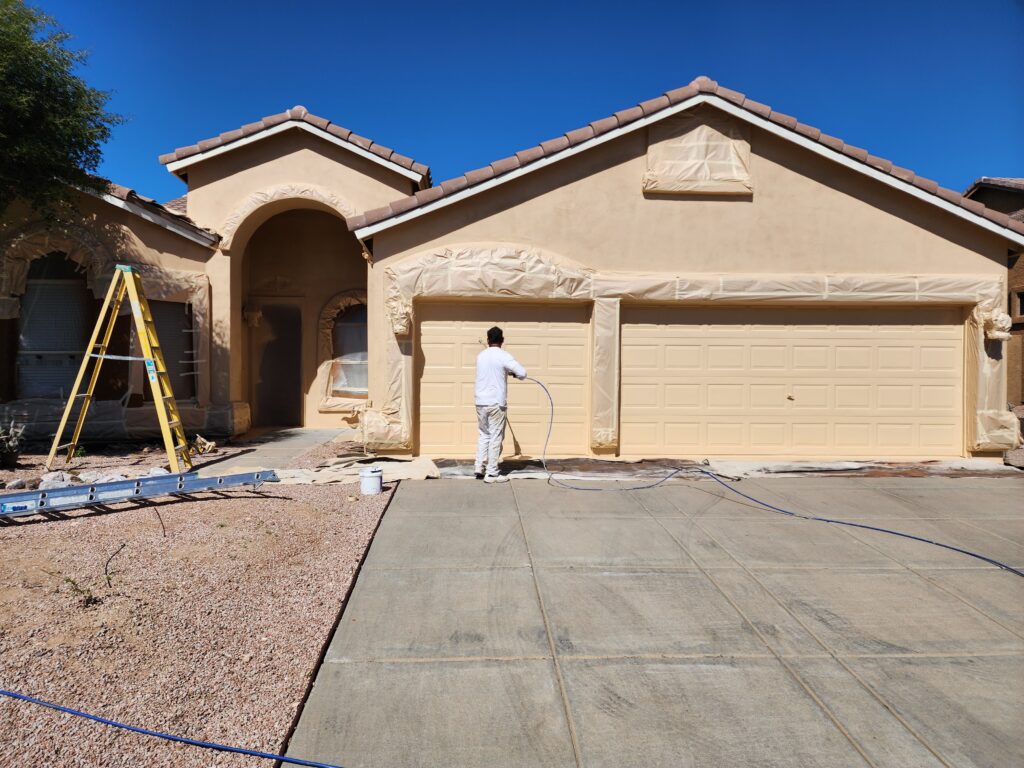Reviving Old Homes with Modern Paint Techniques
Introduction
Historic homes hold a special place in our hearts, offering a glimpse into the past with their unique architectural details and craftsmanship. However, as time passes, the need to update these properties becomes more pressing. Fortunately, modern paint techniques provide an excellent way to rejuvenate these homes while preserving their original charm. By carefully balancing restoration and innovation, you can bring new life to your historic property.
Understanding the Unique Challenges of Historic Homes
Older homes present a distinct set of challenges, particularly when it comes to painting. Over time, these homes may have accumulated multiple layers of paint, some of which might contain harmful substances like lead. Additionally, the surfaces may have deteriorated, requiring significant preparation before new paint can be applied. Therefore, understanding these challenges is crucial before beginning any restoration project.
Dealing with Lead Paint
One of the first steps in reviving an old home is addressing any potential lead paint issues. Lead paint, commonly used before 1978, poses health risks, especially to children and pregnant women. Today’s modern techniques include using lead-safe practices, such as wet sanding and proper containment, to safely remove or seal lead paint. Consequently, this step is critical in ensuring the safety of your home while preparing it for a new finish.

Preparing Surfaces for Modern Paint
Surface preparation is a key factor in the success of any painting project, and this is particularly true for historic homes. Stripping away old paint, repairing damaged areas, and smoothing surfaces are essential tasks that must be done before applying new paint. Fortunately, modern chemical strippers and sanding tools are more effective and less damaging than older methods. Thus, these tools make it easier to achieve a clean, smooth surface that is ready for painting.
The Advantages of Modern Paint Techniques
With the challenges of historic homes in mind, modern paint techniques offer several advantages that can help preserve and enhance the beauty of these properties. In particular, advancements in primer technology, paint composition, and application methods provide a wide range of benefits.
Enhanced Primers for Lasting Results
Priming is a crucial step in any painting project, and modern primers are specifically designed to bond well with older surfaces. These primers not only prevent common issues like peeling or blistering but also help seal any remaining contaminants, such as lead particles. As a result, they provide a stable base for the topcoat, ensuring a long-lasting finish that protects the underlying structure.
Eco-Friendly and Durable Paints
Another significant advantage of modern paint techniques is the availability of eco-friendly paints. Low-VOC (Volatile Organic Compounds) paints are now widely available, offering a safer and more environmentally responsible option for homeowners. These paints are not only better for your health and the environment but also offer excellent durability and a high-quality finish. Additionally, they are available in a wide range of colors, making it easier to find the perfect shade to complement your historic home.
Modern Application Methods
In addition to advancements in paint materials, modern application methods have also improved. For example, spray painting techniques allow for a more even application on intricate surfaces, while advanced brushes and rollers can help achieve a smoother finish. These methods, when used in conjunction with high-quality paints, result in a more professional and polished look, effectively reviving your old home.
Reviving Old Homes with Modern Paint Techniques: Choosing the Right Colors
When it comes to reviving old homes with modern paint techniques, color choice plays a vital role in the overall success of the project. While it may be tempting to opt for trendy, modern colors, it’s important to consider the home’s historical context. Choosing colors that align with the era of the home can help maintain its authenticity while still providing a refreshed appearance.
Exploring Historic Color Palettes
Historic color palettes are available that offer a range of shades true to the period in which your home was built. These palettes are often based on extensive research and can provide inspiration for color schemes that complement the architectural style of your property. By selecting colors from these palettes, you can ensure that your home retains its historical integrity while benefiting from modern paint formulations.
Balancing Tradition with Modern Trends
While sticking to a historical color scheme is one approach, some homeowners prefer to balance tradition with modern trends. This can be achieved by using traditional colors on the exterior while incorporating contemporary shades in less visible areas, such as the interior or accents like doors and shutters. This approach allows you to enjoy the best of both worlds, honoring the past while embracing the present.
Conclusion
Reviving an old home with modern paint techniques is an exciting opportunity to blend the charm of the past with the benefits of today’s advancements. By carefully preparing surfaces, selecting the right materials, and choosing colors that respect the home’s history, you can bring new life to your historic property. These modern techniques not only enhance the appearance of your home but also ensure its longevity, allowing it to continue telling its story for generations to come.